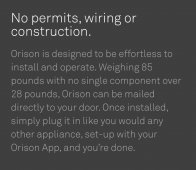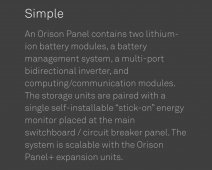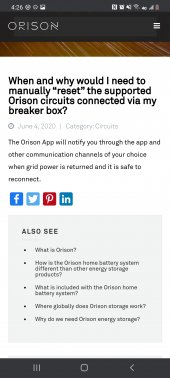robertsig
New Member
Just in the last week I've read a few articles for companies that offer home batteries you simply plug into a wall outlet. Even with the two that I found, I can't quite wrap my head around how they work, or what they do. I know this isn't a solar question per se, but you guys would know.
https://orison.com/
https://sax-power.net/
So...do these batteries simply charge during the day then output their energy at night (or whenever) when rates are low? How does this not expel energy into the grid then? If you use these as a quasi-backup home-UPS solution, how fast do they work? What happens when the power comes back on?
I have a ton of questions and neither company's web page does a great job answering the obvious ones. Does anyone have any insight into these products and their capabilities?
https://orison.com/
https://sax-power.net/
So...do these batteries simply charge during the day then output their energy at night (or whenever) when rates are low? How does this not expel energy into the grid then? If you use these as a quasi-backup home-UPS solution, how fast do they work? What happens when the power comes back on?
I have a ton of questions and neither company's web page does a great job answering the obvious ones. Does anyone have any insight into these products and their capabilities?







